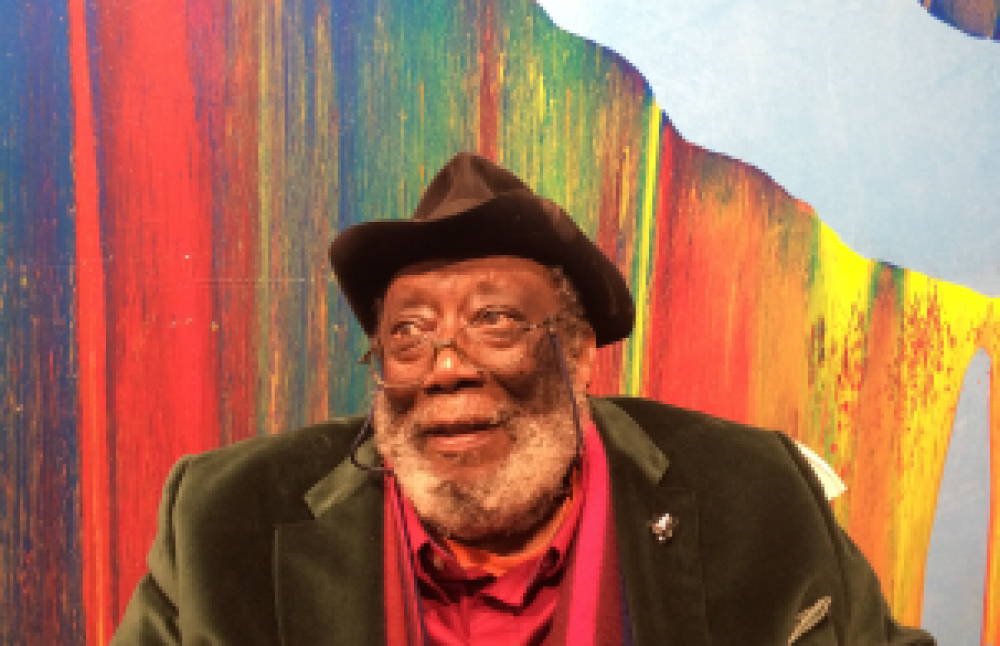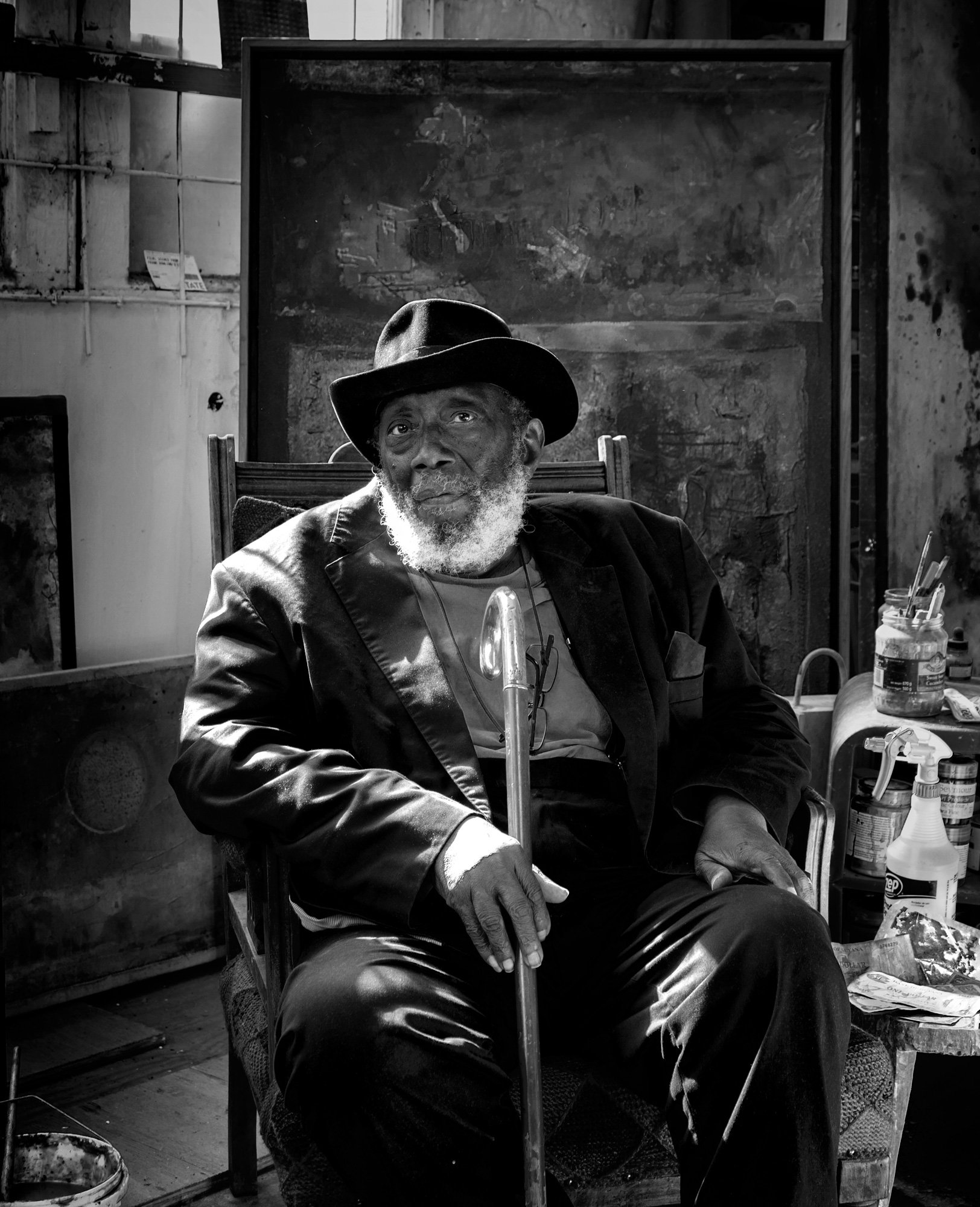Richard Sheridan Patrick Michael Aloysius Franklin Bowling
1934
Guiana
Richard Sheridan Patrick Michael Aloysius Franklin (Frank) Bowling was born on 26 February 1934 in the town of Bartica in colonial British Guiana, eldest son of Agatha and Richard Bowling. When his father took up a post as paymaster in the local police force in 1940, the family moved to New Amsterdam, where Frank spent the greater part of his childhood. Agatha, who was an accomplished seamstress, dressmaker and milliner, set up a small dressmaker’s shop which soon expanded into a larger convenience store, with a house above it where the family lived. Between 1945 and 1950 Frank attended the Catholic Boys’ School and then the Barbice High School in New Amsterdam, while helping in his mother’s store.
In 1950, at the age of 19, Bowling moved to England, where he lived with an uncle and completed his education.
After doing his National Service in the Royal Air Force, Bowling went on to study art, despite earlier ambitions to be a poet and a writer.[3] He studied at the Chelsea School of Art, then in 1959 won a scholarship to London’s Royal College of Art, where fellow students included artists such as David Hockney, Derek Boshier, Allen Jones, R B Kitaj and Peter Phillips. At graduation in 1962, Hockney was awarded the gold medal while Bowling was given the silver. Bowling had been tipped to win the gold but due to his controversial 1960 marriage to Royal College Registrar Paddy Kitchen (controversial because Kitchen was a staff member; relationships were banned between staff and students; they divorced in the late 1960s), he was relegated to silver. His first one-person exhibition, entitled Image in Revolt, was held in London in 1962 at the Grabowski Gallery,[3] and other exhibitions followed. However, Bowling was frustrated at being pigeonholed as a Caribbean artist; as he said in a 2012 Guardian interview with Laura Barnett “It seemed that everyone was expecting me to paint some kind of protest art out of postcolonial discussion. For a while I fell for it. I painted a picture called the Martyrdom of Patrice Lumumba.”
A move to New York in the mid-1960s exposed Bowling to his American contemporaries and soon won him a place in the 1971 Whitney Biennial. As Maya Jaggi writes “unlike contemporaries who founded British pop art, Bowling took a singular path, from Baconesque figurative painting to an abstract art touched by personal memory and history…. Encouraged by the US critic Clement Greenberg, he found a freedom in abstract art, alongside Mark Rothko, Jackson Pollock and Barnett Newman.” Between 1969 and 1972 Bowling was a contributing editor of Arts Magazine.
Bowling now spends part of each year between London and New York, where he maintains studios. He is married to Artist Rachel Scott (Bowling).
In 1965 at the First World Festival of Negro Arts, held in Dakar, Senegal, Bowling’s painting Big Bird won the Grand Prize for Contemporary Arts.
On 26 May 2005 Bowling was elected a member of England’s Royal Academy of Arts. He was among about a dozen artists proposed to fill one of two vacancies in the 80 member academy, and was the first Black artist to be elected a Royal Academician in the history of the institution.
In 2008 he was appointed Officer of the Order of the British Empire(OBE) in the Queen’s Birthday Honours. He was knighted in the 2020 Birthday Honours for services to art.
She married Max who was Swedish. They had three children Paula, Michael and Sean, who tragically lost his life in an accident. She had three grandchildren, Paul, Ruby and Noah and was a great grandmother to Ezra and Illias.
https://www.alexandergray.com/artists/frank-bowling
https://www.royalacademy.org.uk/art-artists/name/frank-bowling-ra
https://www.tate.org.uk/art/artists/frank-bowling-792
https://www.hampstead-school-of-art.org/about/team/frank-bowling-obe-ra
https://catalogue.swanngalleries.com/Lots/auction-lot/SIR-FRANK-BOWLING–OBE-RA–1934—–Repose-for-SO?saleno=2554&lotNo=118&refNo=774807
https://frankbowling.com/



